|
THE HISTORY OF
THE BAILEY BRIDGE
The Bailey bridge was called after her designer, Donald Bailey. He worked as a civil servant at
the British War Office. In his spare time he built models of bridges and showed one of these to his
superiors. His design was looked over and after a positive thumbs-up a bridge of real proportions
was constructed.
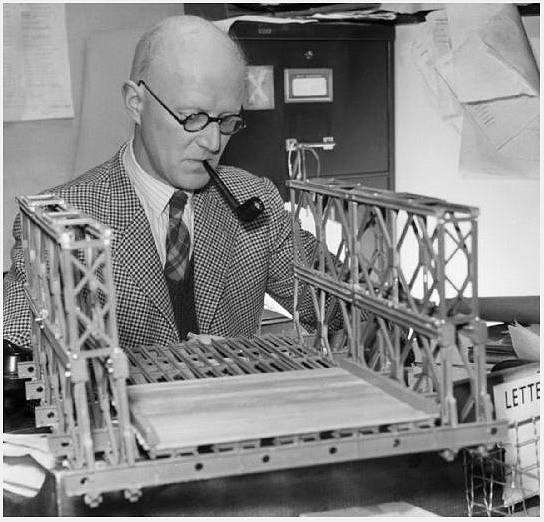
Donald Coleman
Bailey met een model van zijn
brug
In 1941 the Bailey bridge became the official Standard Military Bridge. It was
entered in the service of the Corps of Royal Engineers and it was first used during the campaign
in Sicily, 1943. The American also used the bridge and built the components through license. A total
of 40 kilometers of bridges was built during the war by the British and American. They used 490.000 tons
of steel for the construction.
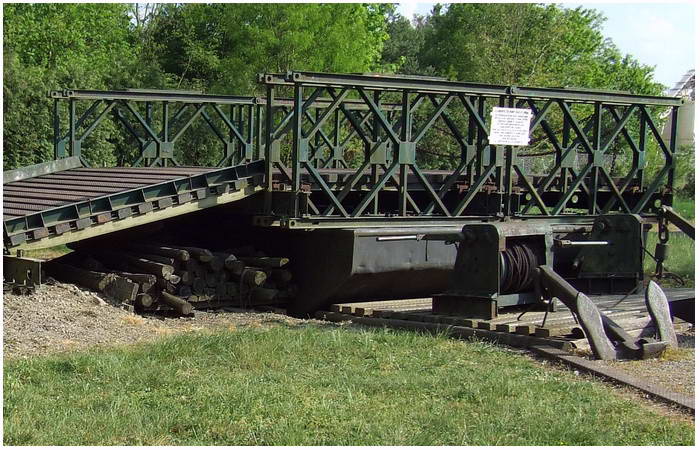
Bridge with ramp and anchor
(on show in Marckolsheim, France)
The New Zealander A.M. Hamilton, the designer of the Hamilton-Callender bridge thought that he
could claim one of the patents, and placed his claim with Royal Commission for Awards to Inventors.
It was honoured, but it was not enough to claim the whole bridge. And Baileys bridge had much more to offer
than Hamilton his bridge. The Bailey bridge is still a bridge that is used today by armies. Bailey was
rightly knighted for his design. They were placed throughout the whole of Europe, and you can still find Bailey
bridges in use today.
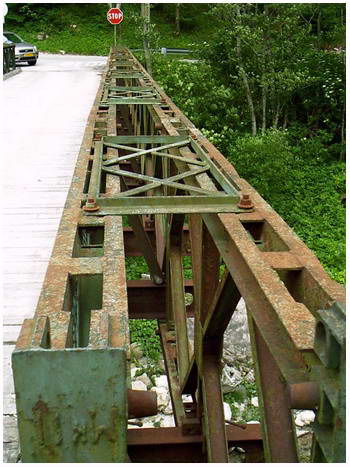 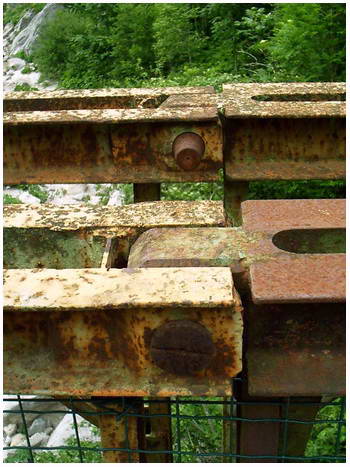
Details of a Bailey
bridge (still in use at Titele, Italië)
A Bailey bridge gets it's strength through its simple assemblage. It is built up in sections
and the modules are constructed as one by human strength only, no cranes are necessary. The three meter
long side panels are constructed from steel U-beams. To give these strength, some support is placed inside
the panels. These completed panels are placed as a double pair on steel beams. On these beams a wooden road
is placed.
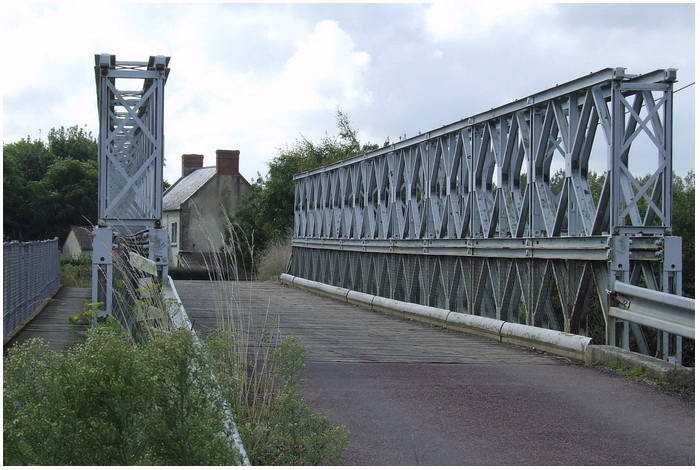
De
Bailey bridge at Saint-Hilaire-Petitville has on one side a pedestrian walkway
On a side of the bridge it was possible to constructed a small walkway for pedestrians.
When the bridge becomes too long or it must carry heavy loads, extra panels
are placed atop the first row (as above is shown on the bridge at Saint-Hilaire-Petitville).
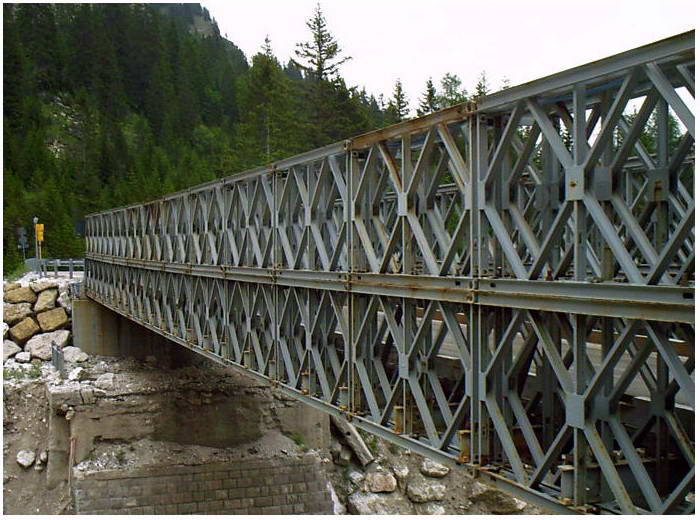
A
Bailey bridge across the river Rudavoi in the Italien
Dolomites
The First Bailey bridge that was built in France, was constructed near
Bénouville across the Caen canal. It was laid down a couple of hundred meters south of the,
now, famous Pegasus bridge. The bridge was constructed on June 8, 1944 to bring supplies between
both side, and to have to rely on Pegasus bridge alone. This was not the first Bailey built as a
tactical tool, the first was constructed in Sicily, and later a plenty in Italy itself. A total
of more than 3000 alone would be built in Italy.
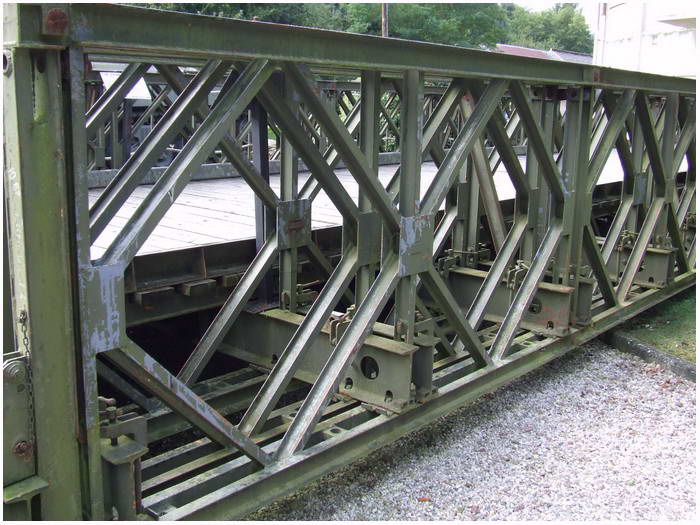
Detail from a side panel (at the former
‘Musée Août 44’ in Falaise, France)
ALG with SMT, PHS and
PSP
After a bridgehead was formed in Normandy after the landings on June 6th, 1944, it was of the most
importance to construct airfields for fighters and fighterbombers that could protect and give support
to the ground forces. With the first waves of Allied forces on the Normandy beaches, the engineers came
to shore. Their first task was to clear the beaches and land from obstacles and to construct bridges. Another
task was the construction of the airfields. Often under German fire, the engineers started their work on
these ALG's (Advanced Landing Grounds).
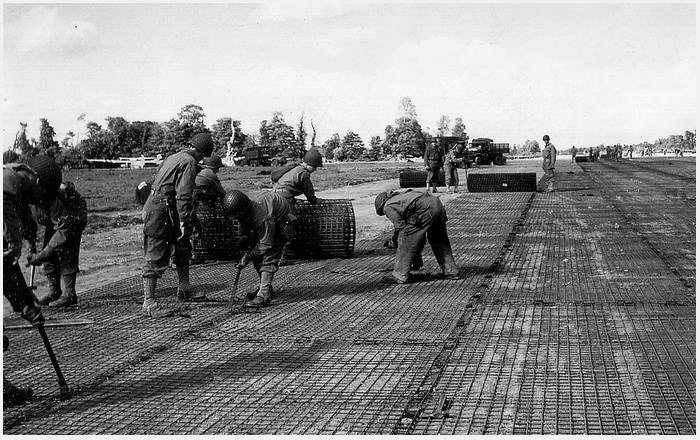
The Square Mesh Track (SMT) is deployed
First the soil was cleared and flattened, and then covered
with Square Mesh Track (SMT). This SMT was developed by the British and consisted of a heavy wire maze
(in squares of 8 x 8 cm) on big rolls.
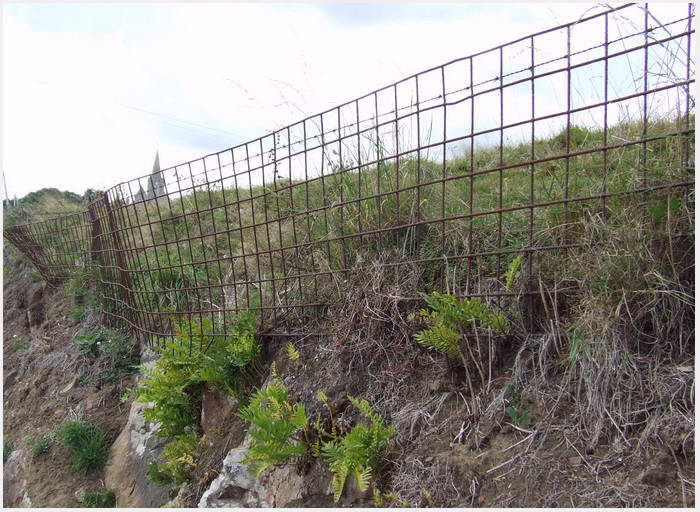
SMT can still be found as fences in Normandy, like this near
Quinéville
The first airfields in Normandy were constructed in this way. Later ALG's were constructed with
Prefabricated Hessian (Burlap) Surfacing (PHS or PBS). This consisted of asphalt impregnated
jute of approximately 100 meters in length and 1 meter wide.

Prefabricated
Hessian (Burlap) Surfacing (PHS of
PBS) is roled out
Because of the closed deck of the PHS, the dust clouds that were created by the propblast
of the planes was prevented. It was not uncommon to use PHS and SMT on top of each other,
'the best of both worlds'.
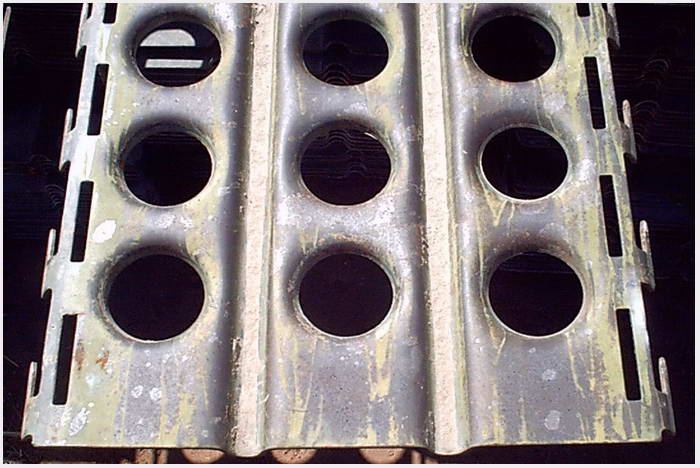
PSP; Pierced Steel
Planking (or 'Perforated Steel Plating')
Just as America became involved in the second Word War, they developed PSP,
'Pierced Steel Planking' (also known as; 'Perforated Steel Plating'). Another name that was used for PSP was 'Marsden Matting',
from Marston, an airfield in Georgia, US, were it was used the first time. A section of steel PSP was about 3 meters
in length and 40 cm wide. It had three rows of round holes (29 in the straight length, 64mm diameter). It was because of
this construction that it held its strength, but was light enough to work with. On the side of each PSP were hooks and
holes to connect them together.
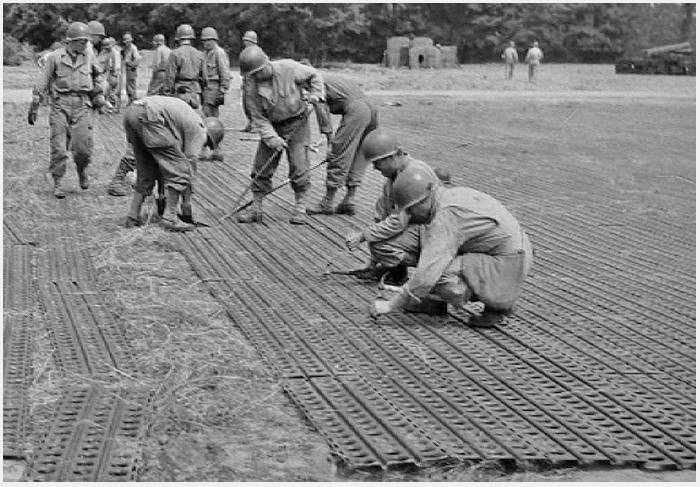
With 2000 tons of PSP (60.000 pieces) a 100 men could make a runway of 1.5 km length and 50 meters wide in 175 hours.
In July 1944 the first PSP was shipped to Normandy. But soon it was clear that the fast moving army outrun the ALG's
that were being built. Most of the PSP was used for dispersal places for planes and to accommodate temporary encampments
for the Allied troops. After several German airfields were overrun, the damaged runways were mostly rebuilt by filling
the holes, then to create new runways. But the PSP was a popular solution for other things than construction of airfields.
It was used to construct small bridges, cages, fences and even chairs were 'folded' out of PSP.
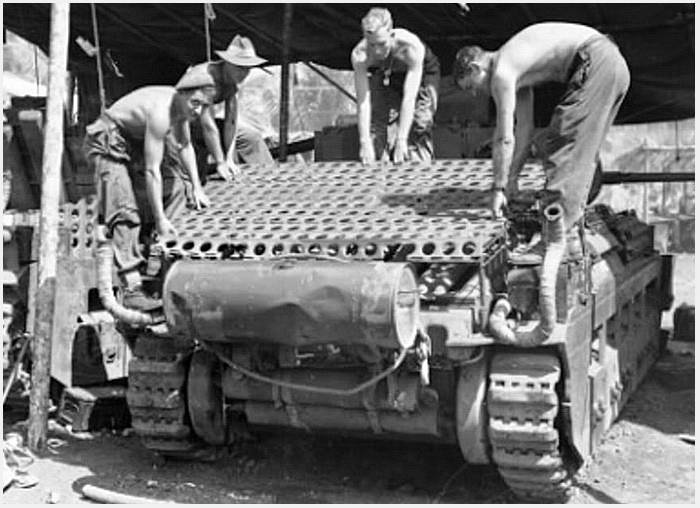
PSP a extra armour for
Australian Matilda tanks in Balikpapan,
Borneo
By September, 15, 1944, the Americans had 80 airfields and the British 76. The PHS was soon vanished from the
theatre of war. But pieces of SMT could be found decades after the war, but is now almost gone. On the other hand,
PSP can be found in lots of places all over Normandy. It is used mainly by farmers as fences and as cages to hold
their livestock. In the city of Bayeux is a complete wall of a house still covered with PSP. The PSP is a remarkable
piece of recent history, and have a nice rusty brown colour against the green background of Normandy.
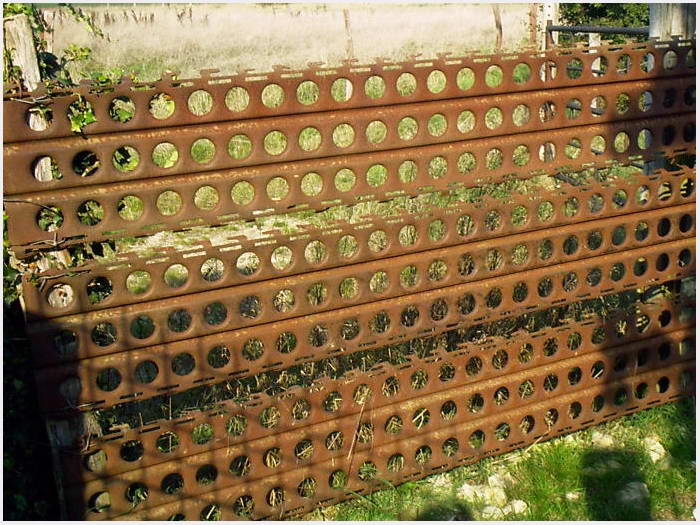
PSP is still in use by farmers in France, to keep the cows in,...
RETURN
|